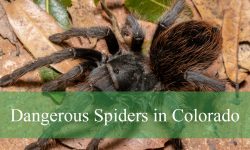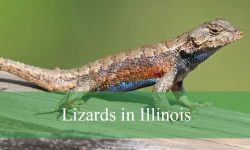The state of Michigan supports a variety of stinging insect species, some of which can pose real threats to human safety. While many play vital roles in pollination and pest control, their defensive behaviors and potent stings make them dangerous when nests are disturbed. Encounters often occur in backyards, parks, and wooded areas, especially during the warmer months when insect activity peaks.
Understanding which species live in Michigan is essential for staying safe outdoors. From highly aggressive yellowjackets and hornets to the deceptively harmless-looking sweat bees, each insect has its own habits and level of risk. Some can sting repeatedly, while others sting only once but leave lasting effects. People with allergies must be particularly cautious, as even a single sting can trigger a medical emergency.
This guide highlights twelve of the most notable stinging insects in Michigan, detailing their appearance, behavior, and potential dangers. By recognizing these species and learning how to avoid risky situations, residents can better protect themselves while appreciating the important ecological roles these insects play.
Types of Dangerous Stinging Insects Found in Michigan
Eastern Yellowjacket (Vespula maculifrons)
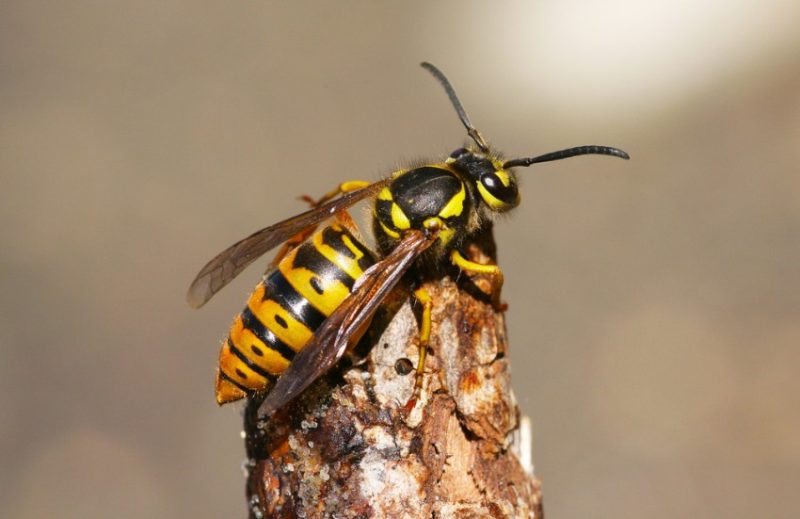
The Eastern Yellowjacket is one of the most recognizable stinging insects in Michigan, easily identified by its bold black-and-yellow striped body. These wasps are social insects that build large underground nests, often in lawns, gardens, or hidden cavities. During the late summer and early fall, their colonies grow large and food sources become scarce, making them far more aggressive around human activity.
Yellowjackets are notorious for their painful stings, which can be delivered multiple times since their stinger does not detach like a honey bee’s. Their venom contains compounds that cause burning pain, redness, and swelling, and in some individuals, severe allergic reactions such as anaphylaxis. Because they are attracted to sugary foods and drinks, they often appear uninvited at outdoor gatherings.
In Michigan, encounters with yellowjackets are especially common in backyards, parks, and wooded areas. They will vigorously defend their nests when disturbed, sometimes chasing perceived threats over long distances. This defensive behavior makes them one of the most dangerous stinging insects in the state.
To reduce risks, people should cover food and drinks outdoors, avoid swatting at yellowjackets, and contact professionals for nest removal. Attempting to destroy a nest without protection is highly dangerous, as a swarm can inflict dozens of stings in seconds.
Bald-faced Hornet (Dolichovespula maculata)
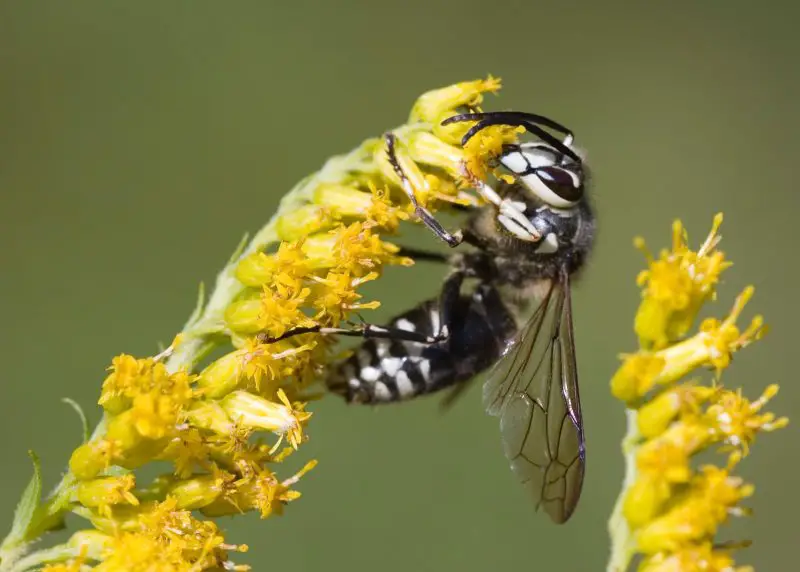
Despite its name, the Bald-faced Hornet is actually a type of wasp, not a true hornet. It is striking in appearance, with a black body and distinctive white markings on the face and abdomen. These insects are known for building large paper nests, often hanging from trees, shrubs, or even buildings. In Michigan, their nests can reach the size of a basketball and house hundreds of workers.
Bald-faced hornets are extremely aggressive when defending their nests. Their sting is considered more painful than that of yellowjackets due to the potency of their venom. Unlike honey bees, they can sting repeatedly, injecting venom that causes burning pain, swelling, and sometimes secondary infections if not treated properly. People who are allergic may experience severe systemic reactions.
Encounters typically occur when someone accidentally disturbs a nest. These wasps are quick to attack and can pursue intruders for considerable distances. Because of their aggressive nature, they are especially dangerous in residential areas where nests may be hidden near doorways, eaves, or play areas.
Removing a Bald-faced Hornet nest should never be attempted without protective gear. Pest control experts recommend treatment at night when the colony is less active, reducing the risk of a mass attack. Prevention involves regular inspection of trees and structures during the summer months.
Paper Wasps (Polistes spp.)
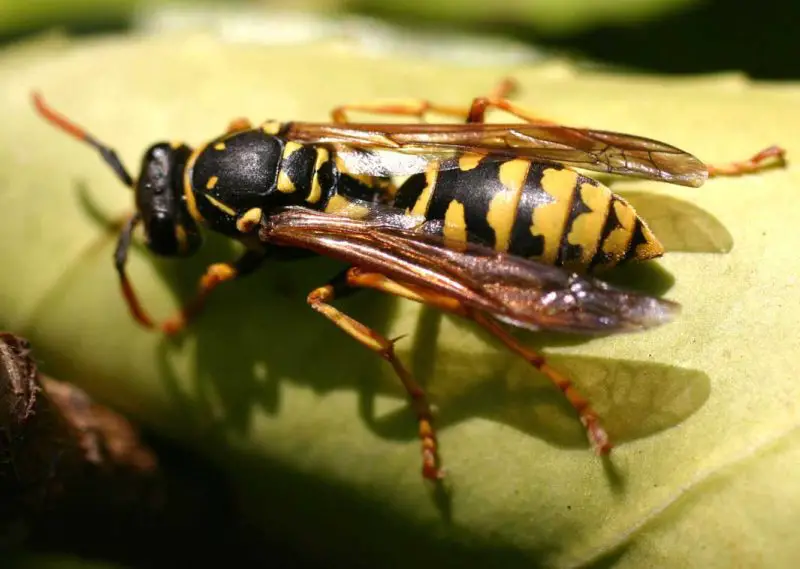
Paper wasps are slender, long-legged wasps with reddish-brown or yellow markings, common across Michigan during the warmer months. They are named for the papery, umbrella-shaped nests they build from chewed wood fibers mixed with saliva. Nests are often found hanging under porch roofs, decks, eaves, and other sheltered areas around homes.
Unlike yellowjackets and hornets, paper wasps are less aggressive but still defend their nests fiercely if threatened. Their sting is painful, causing localized swelling and redness. While not as dangerous in terms of venom toxicity, multiple stings can be serious, particularly for children, the elderly, or those with allergies.
Paper wasps play an important role in ecosystems by feeding on caterpillars and other pests, making them beneficial to gardeners. However, their tendency to build nests close to human dwellings creates frequent conflicts. Residents often encounter them when gardening, working outdoors, or reaching into storage areas.
To prevent stings, nests should be removed early in the season before colonies grow large. Wearing protective clothing and avoiding sudden movements near nests can reduce risks. Professional removal is recommended if a nest is in a high-traffic area.
European Hornet (Vespa crabro)
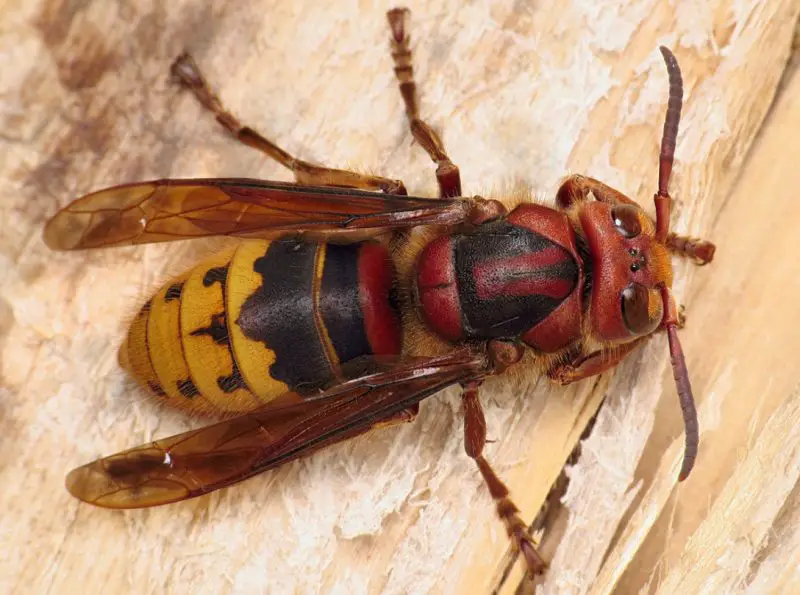
The European Hornet is the only true hornet species established in Michigan, introduced from Europe in the 1800s. It is much larger than most wasps and yellowjackets, with workers measuring up to 1.5 inches long. Their reddish-brown head and thorax, combined with yellow-striped abdomens, make them intimidating to encounter.
European Hornets build large paper nests in hollow trees, wall voids, attics, and barns. Unlike many wasps, they are active at night and are attracted to light sources, often flying into homes or buzzing around porch lamps. Their nocturnal activity makes them unique among stinging insects in the state.
The sting of a European Hornet is very painful due to its size and the potency of its venom. While generally less aggressive than Bald-faced Hornets, they will attack in groups if their nest is disturbed. Multiple stings can be dangerous, especially for allergic individuals.
Controlling European Hornets can be challenging because their nests are often hidden inside structures. If discovered, professional pest control is strongly advised. Sealing openings around homes and limiting outdoor lighting can help reduce nighttime encounters.
Honey Bee (Apis mellifera)
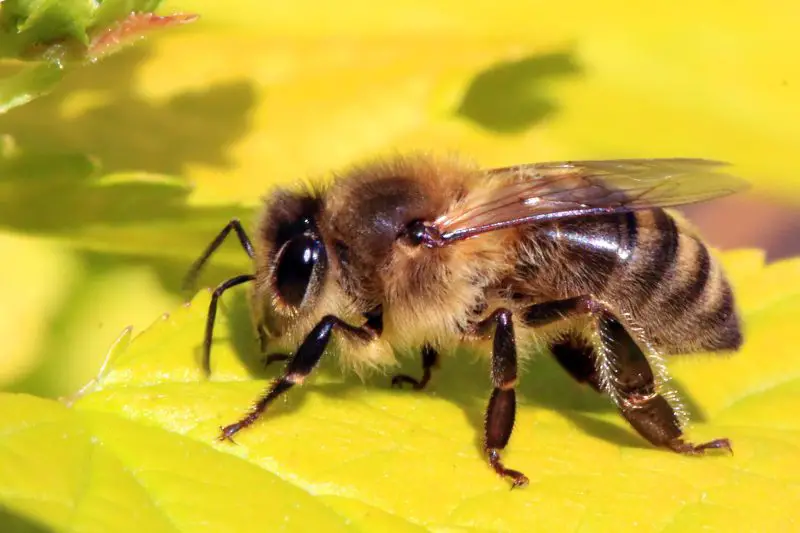
The Honey Bee is one of the most familiar stinging insects in Michigan, valued for its role in pollination and honey production. They have fuzzy golden-brown bodies with black bands, which help them collect and carry pollen efficiently. Colonies are highly organized, consisting of thousands of workers, drones, and a single queen, often housed in hives or cavities in trees and buildings.
While honey bees are not typically aggressive, they will defend their colony if threatened. Their sting is unique because the barbed stinger lodges in the skin, tearing away from the bee’s body and leading to its death. This sting delivers venom that causes sharp pain, redness, and swelling at the site. For people with bee allergies, a single sting can trigger life-threatening anaphylaxis.
In Michigan, honey bees are commonly found in gardens, orchards, meadows, and agricultural fields. They play a vital ecological role but can become a hazard when colonies establish nests close to human dwellings. Swarming honey bees, though not aggressive, can alarm people due to their large numbers.
Beekeepers often relocate colonies safely, and residents are encouraged not to destroy honey bee nests without professional help. Protective clothing and careful behavior near hives reduce the risk of stings.
Bumble Bee (Bombus spp.)
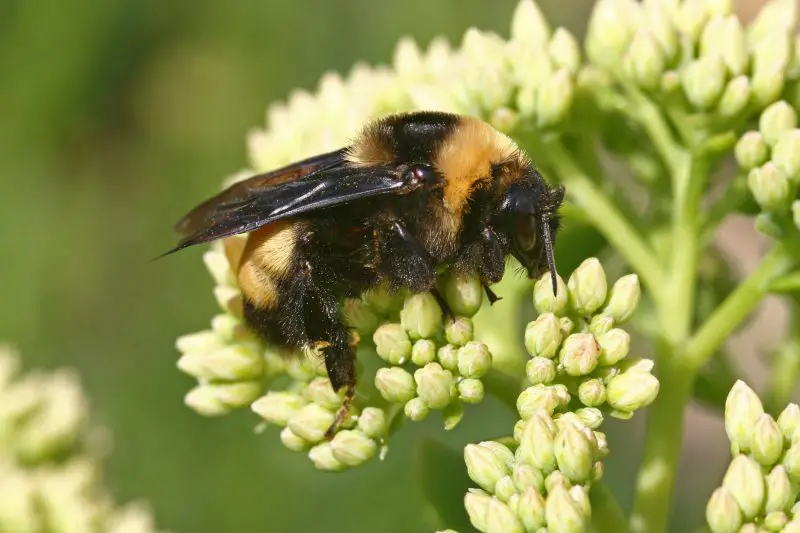
Bumble Bees are large, fuzzy insects with black and yellow patterns, easily recognizable in Michigan’s meadows and gardens. Unlike honey bees, they live in smaller colonies, often nesting in the ground, abandoned rodent burrows, or piles of grass and leaves. Their robust bodies and loud buzzing make them one of the more noticeable bees in the state.
Bumble bees are generally docile and focused on foraging, but they will defend their nest aggressively if disturbed. Their sting is painful and, unlike honey bees, they can sting multiple times because their stinger does not detach. Their venom can cause swelling and redness, and in severe cases, allergic individuals may experience dangerous reactions.
These bees are critical pollinators, especially for crops like tomatoes, blueberries, and cucumbers, as they perform “buzz pollination,” a technique honey bees cannot replicate. Their ecological benefits are immense, making them important allies to both wild ecosystems and agriculture.
Despite their benefits, ground nests near human activity can increase the risk of accidental stings. Gardeners should watch for nesting sites and avoid disturbing them. Protective measures should be taken when working in areas where bumble bees are active.
Sweat Bees (Halictidae family)
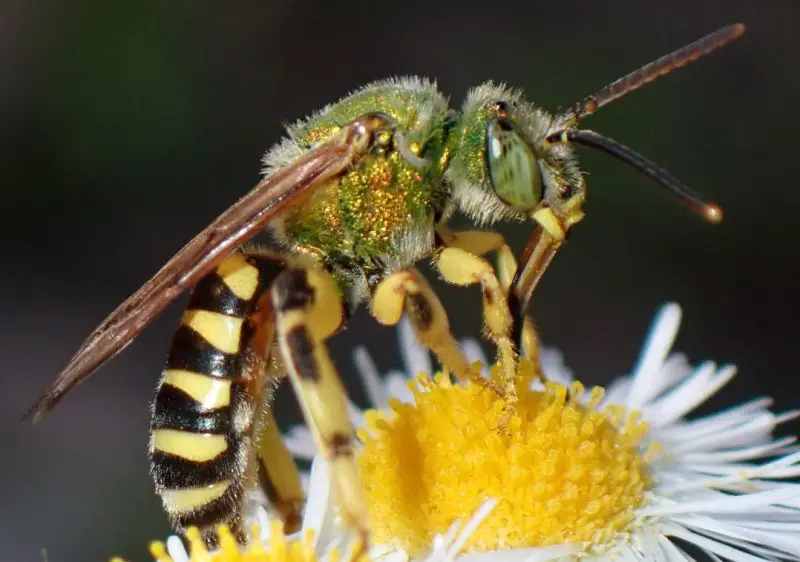
Sweat Bees are small, metallic-looking bees, often green, blue, or bronze in color. They are among the most diverse bee families in Michigan, with many species living solitary lives while others form small colonies. As their name suggests, they are attracted to human sweat, which provides them with essential salts and moisture.
These bees are generally non-aggressive, and most stings occur when they are accidentally brushed against or provoked while landing on skin. Their stings are considered mild compared to those of wasps or hornets, usually causing brief pain and minor swelling. However, sensitive individuals may still react strongly.
Sweat bees are beneficial pollinators, helping fertilize wildflowers and crops across Michigan. Because they are small and often go unnoticed, people may not realize how important they are to local ecosystems. Despite their size, they contribute significantly to maintaining biodiversity.
To avoid stings, individuals should gently brush them away rather than swatting when they land on the skin. Wearing light clothing and avoiding excessive sweating in bee-prone areas can also reduce encounters.
Cicada Killer Wasp (Sphecius speciosus)
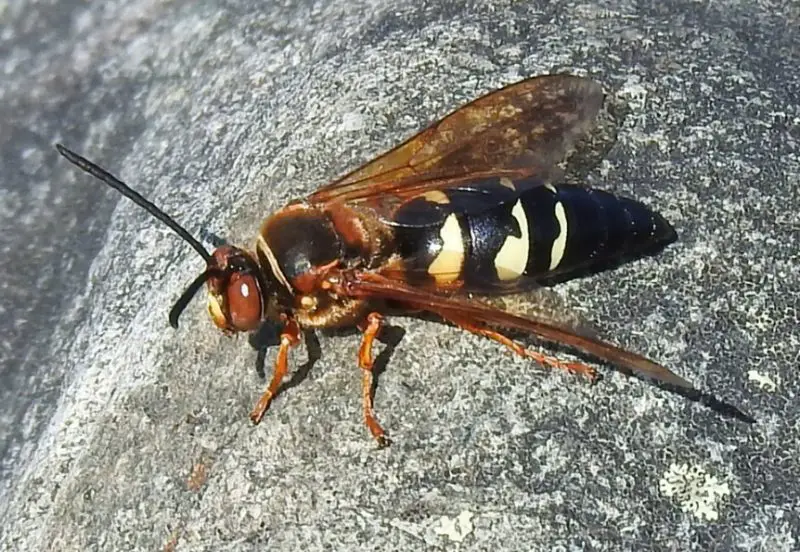
The Cicada Killer Wasp is one of the largest wasps in Michigan, with females reaching up to two inches in length. Their black bodies with yellow markings resemble oversized yellowjackets, but their sheer size often causes alarm. They are solitary wasps, with females digging burrows in sandy or loose soil to raise their young.
Despite their intimidating appearance, Cicada Killers are not aggressive toward humans. Females are capable of stinging but generally use their venom to paralyze cicadas, which they drag back to their burrows as food for their larvae. Males, which cannot sting, may act territorial and buzz around intruders but pose no real danger.
The sting of a Cicada Killer, when it does occur, is painful due to their size, but stings are rare. Their venom is not considered dangerous to humans unless an individual is allergic. Most people encounter them in late summer when cicadas are abundant, and females are actively hunting.
These wasps can be beneficial by helping control cicada populations, though their burrows may become a nuisance in lawns or gardens. Avoiding direct contact and allowing them to complete their seasonal cycle is usually the best approach.
Velvet Ant – “Cow Killer” (Dasymutilla occidentalis)

The Velvet Ant, often called the “Cow Killer,” is actually a type of wingless wasp, not a true ant. Found in sandy areas of Michigan, these insects are strikingly colored in bright red and black, serving as a warning to potential predators. Females are wingless and resemble large, hairy ants, while males have wings and can fly.
Velvet Ants are solitary and do not form colonies. They are usually seen wandering on the ground, searching for the nests of ground-nesting bees or wasps where they lay their eggs. Despite their attractive appearance, they are best admired from a distance, as they are among the most painful stinging insects in the region.
Their sting is infamous for its intensity, earning them the nickname “Cow Killer.” Although the sting is extremely painful, it is not lethal. The venom causes immediate burning, sharp pain, and localized swelling. Fortunately, they are not aggressive and will only sting when handled or stepped on.
Because they are solitary and do not defend nests, encounters with Velvet Ants are relatively rare. Avoiding direct contact is the best prevention. Their ecological role as a parasite of other wasps and bees contributes to balancing insect populations.
Ground Bees (Andrenidae family and related species)
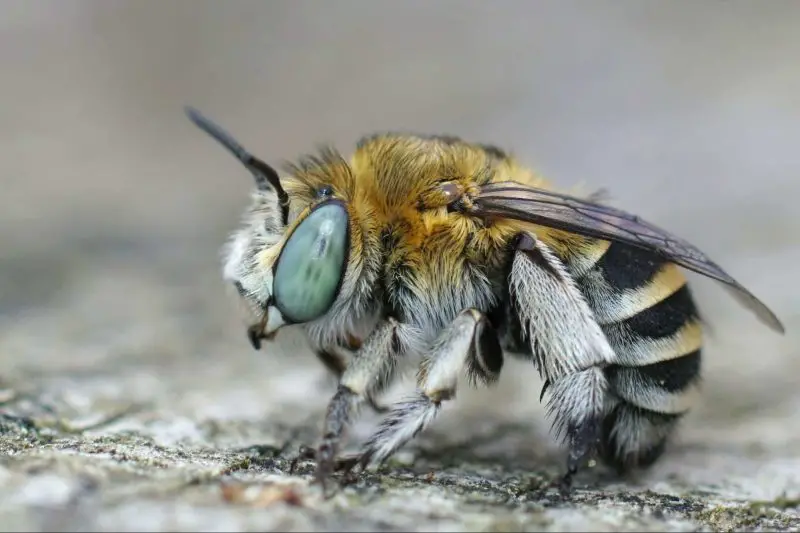
Ground Bees are a diverse group of solitary bees that nest in sandy or loose soil across Michigan. They are generally small to medium-sized, often brown, black, or dull metallic in color. In spring, many species emerge in large numbers, creating small mounds of soil that can look like an infestation in lawns or gardens.
Although their numbers can be intimidating, ground bees are non-aggressive and rarely sting. Females can sting if provoked, but they typically ignore humans and focus on digging tunnels for their nests. Males may fly around people but are harmless, as they lack stingers.
Their stings, when they occur, are mild compared to those of hornets or yellowjackets. Localized swelling and redness may follow, but most people only experience minor discomfort. Allergic individuals should still exercise caution, though the risk is far lower than with social wasps or bees.
Ground Bees are important pollinators of early spring flowers, making them valuable for natural ecosystems and agriculture. Eliminating them is generally unnecessary unless they pose a direct hazard in high-traffic areas. Allowing them to complete their short nesting season helps sustain healthy pollinator populations.
Mud Dauber Wasp (Sceliphron spp. and Chalybion spp.)
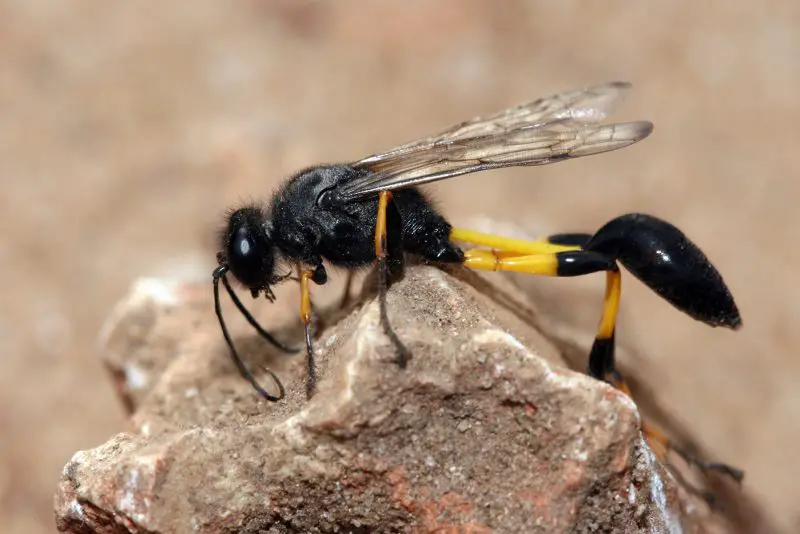
Mud Daubers are solitary wasps found throughout Michigan, recognized by their long, slender bodies and thread-like waists. They are usually black or metallic blue and are well known for building nests out of mud on walls, eaves, and other sheltered structures. These tube-shaped mud nests often contain paralyzed spiders stored as food for their larvae.
Unlike social wasps, Mud Daubers are not aggressive. They rarely sting humans and usually only do so if they are directly handled or threatened. Their sting is mild compared to hornets or yellowjackets, causing only temporary pain and slight swelling. Because of their solitary lifestyle, they pose little danger to people.
Mud Daubers play a beneficial role in controlling spider populations, including species that may enter homes and gardens. For this reason, many people tolerate their presence even if their nests appear on houses or sheds. Their hunting behavior makes them important allies in natural pest management.
While they are not typically harmful, some homeowners choose to remove mud nests for aesthetic reasons or to prevent large numbers from accumulating. Gentle removal is usually enough, and because Mud Daubers are not defensive, professional pest control is rarely needed.
Hornet Moth Wasp Mimics (Sesia spp. and related species)
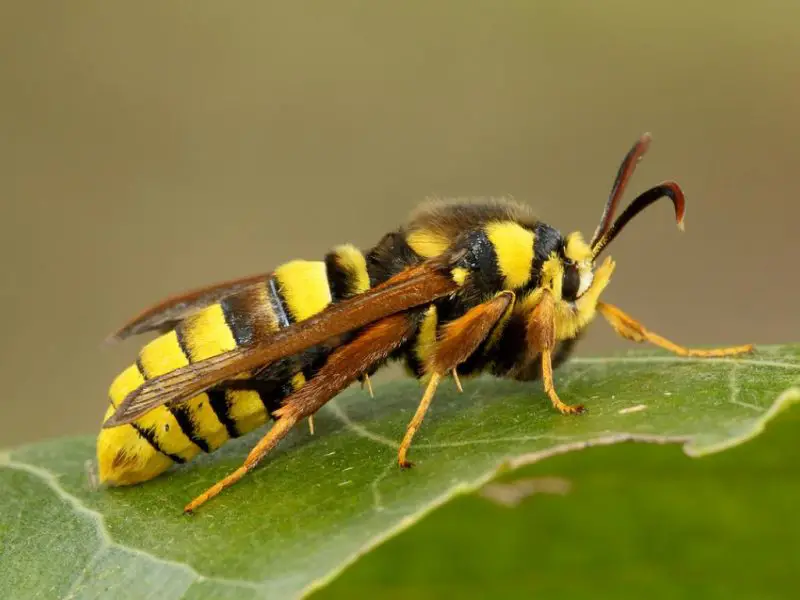
Hornet Moth Wasp Mimics are clearwing moths that closely resemble hornets or wasps in both coloration and flight behavior. They are found in wooded areas and gardens across Michigan, where they can easily be mistaken for dangerous stinging insects. Their yellow and black stripes provide excellent camouflage against predators.
Despite their alarming appearance, these insects are completely harmless to humans. They lack stingers and cannot deliver venom. Their mimicry is a form of protective adaptation, discouraging predators that might otherwise target them.
Although they do not pose a stinging threat, some species can be pests to trees and shrubs. Their larvae bore into trunks and roots, weakening plants over time. In orchards and gardens, infestations may damage fruit trees and ornamental plants.
Because they mimic hornets so well, people often panic when they see them. Learning to recognize the subtle differences—such as their transparent wings and more delicate body shape—can help reduce unnecessary fear. While harmless to people, monitoring for plant damage is important in managing their impact.
Conclusion
Stinging insects in Michigan range from aggressive nest defenders like Bald-faced Hornets and European Hornets to relatively mild species such as Sweat Bees and Ground Bees. Even solitary species like Velvet Ants or Cicada Killers, while not naturally hostile, can deliver extremely painful stings if provoked. For this reason, caution and awareness are key when encountering these insects in nature or around homes.
While their stings can cause pain and, in some cases, severe allergic reactions, these insects also contribute positively to the environment. Bees are vital pollinators, wasps help regulate pest populations, and even intimidating species like Cicada Killers play a role in balancing ecosystems. Rather than eliminating them indiscriminately, it is often best to manage risks by keeping distance, securing outdoor food, and seeking professional help for nest removal.
By respecting the presence of these twelve stinging insects and learning how to identify them, people in Michigan can coexist more safely with these creatures. With the right knowledge and precautions, it’s possible to reduce dangerous encounters while still appreciating their ecological importance.
FAQs About Dangerous Stinging Insects in Michigan
What are the most dangerous stinging insects in Michigan?
The most dangerous species include Eastern Yellowjackets, Bald-faced Hornets, Paper Wasps, and European Hornets. These insects are aggressive nest defenders and capable of delivering multiple painful stings.
Do honey bees in Michigan sting more than once?
No, honey bees can only sting once because their stinger is barbed and remains lodged in the skin. After stinging, the bee dies, but the stinger continues to inject venom for several minutes.
Are bumble bees aggressive toward humans?
Bumble bees are generally docile and focused on foraging. They only become aggressive if their nest is disturbed. Unlike honey bees, they can sting multiple times.
How painful is a Velvet Ant sting?
The Velvet Ant, or “Cow Killer,” is famous for its extremely painful sting. While not fatal, the sting can cause intense burning pain and swelling that lasts for hours.
Do Cicada Killer Wasps sting people?
Cicada Killers rarely sting humans unless handled directly. Females reserve their venom for paralyzing cicadas. Their large size makes them intimidating, but they are not naturally aggressive toward people.
Are Sweat Bees dangerous?
Sweat Bees are not considered dangerous. Their sting is mild and usually causes only slight irritation. However, like all stings, they can be problematic for allergic individuals.
How can I avoid stings from these insects?
Avoid wearing strong perfumes outdoors, keep food and drinks covered, and stay away from nests. Do not swat at wasps or bees, as this increases aggression. If a nest is near your home, contact a professional for safe removal.
When are stinging insects most active in Michigan?
They are most active during the warmer months, especially late summer and early fall, when food sources become scarce and colonies are at their largest.


